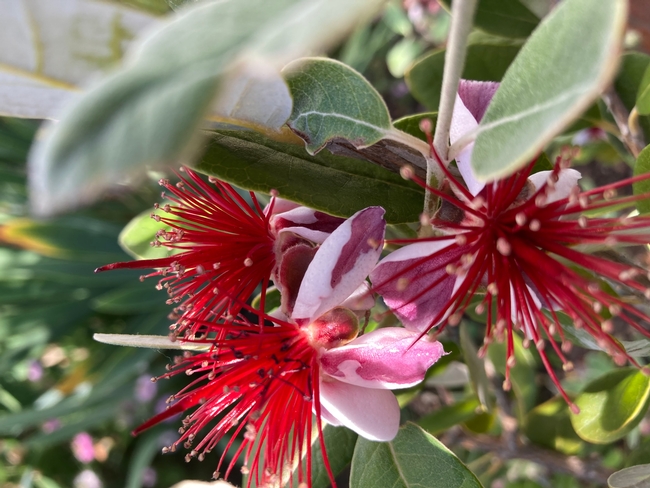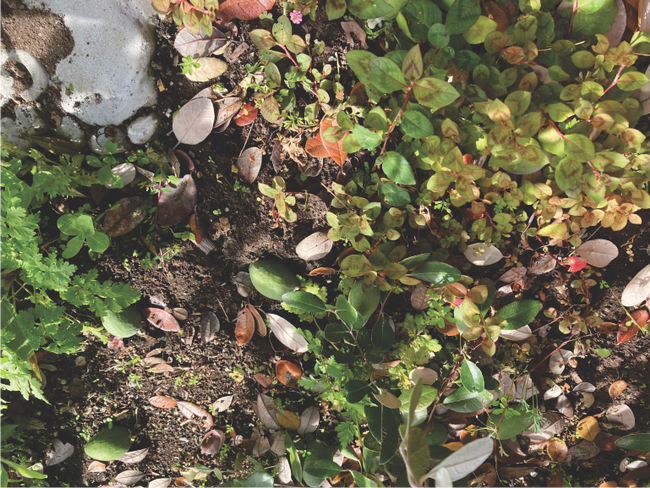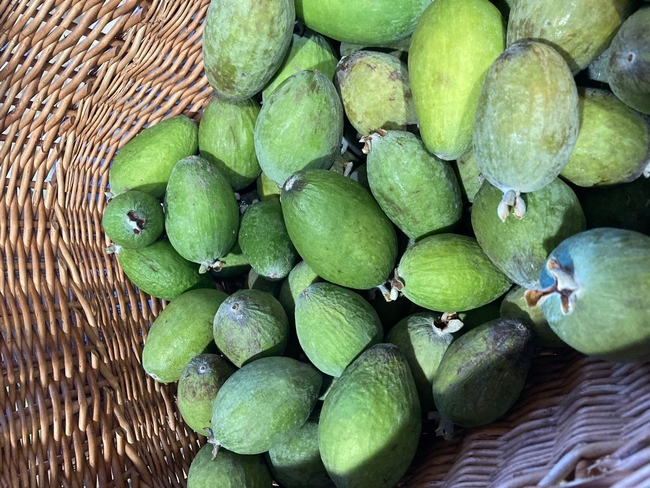by Jane Callier
Pineapple guavas have beautiful blooms
One of the first things we learn in Master Gardener training (in Napa County) is our mediterranean climate. This plant is a “ringer” for plants typical of this summer-dry climate although the plant is said to be from a more central area of South America. Water-saving strategies include leathery oval foliage, its leaves are on the small side, even the oval shape are all aimed at saving water. Today, New Zealand is by far the major producer of commercial Feijoas. Since the early 20th century New Zealand has been developing new and improved varieties of Feijoas. Other countries with a mediterranean climate that grow Feijoas commercially are Chile, Turkey and Australia.
These plants were previously termed as Feijoa sellowiana, but botanical research has determined that it fits more accurately in a different genus. The scientific name has been updated to Acca sellowiana, but the fruits are still called Feijoas.
Pineapple guava showing different aspects of its oval leaves
How many guavas are in this photo?
I find the fruit to taste okay, not delicious, but definitely worthy of keeping. To eat, cut them in half and scoop out the inside. Some sources say the skin is edible on the young fruit; I think it's too bitter.
Napa Master Gardeners are available to answer garden questions by email: mastergardeners@countyofnapa.org. or phone at 707-253-4143. Volunteers will get back to you after they research answers to your questions.
Visit our website: napamg.ucanr.edu to find answers to all of your horticultural questions.
Photo credits: Jane Callier
References:
www.feijoaaddiction.com/feijoafacts
https://plants.ces.ncsu.edu/plants/acca-sellowiana/
https://landscapeplants.oregonstate.edu/plants/feijoa-sellowiana



